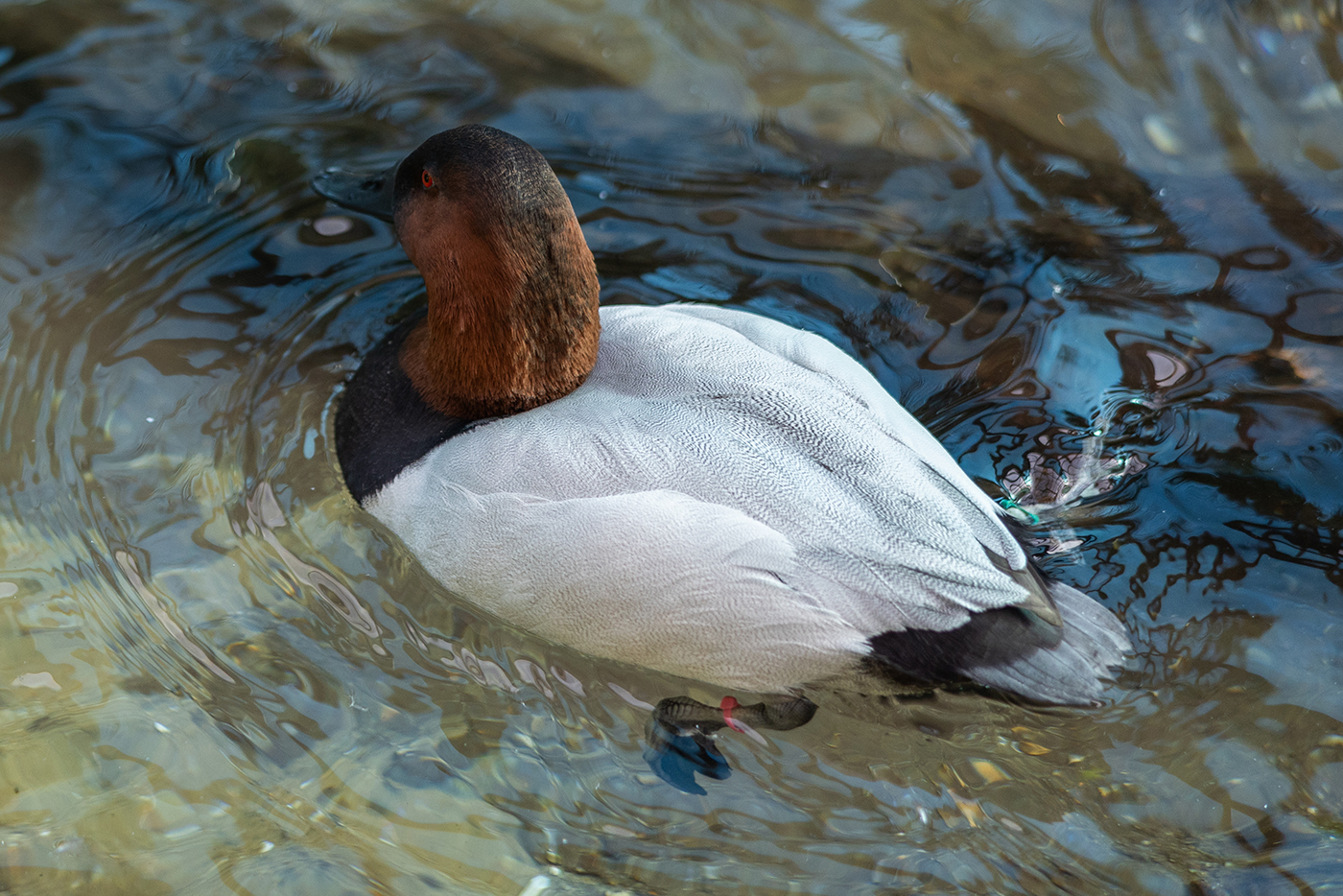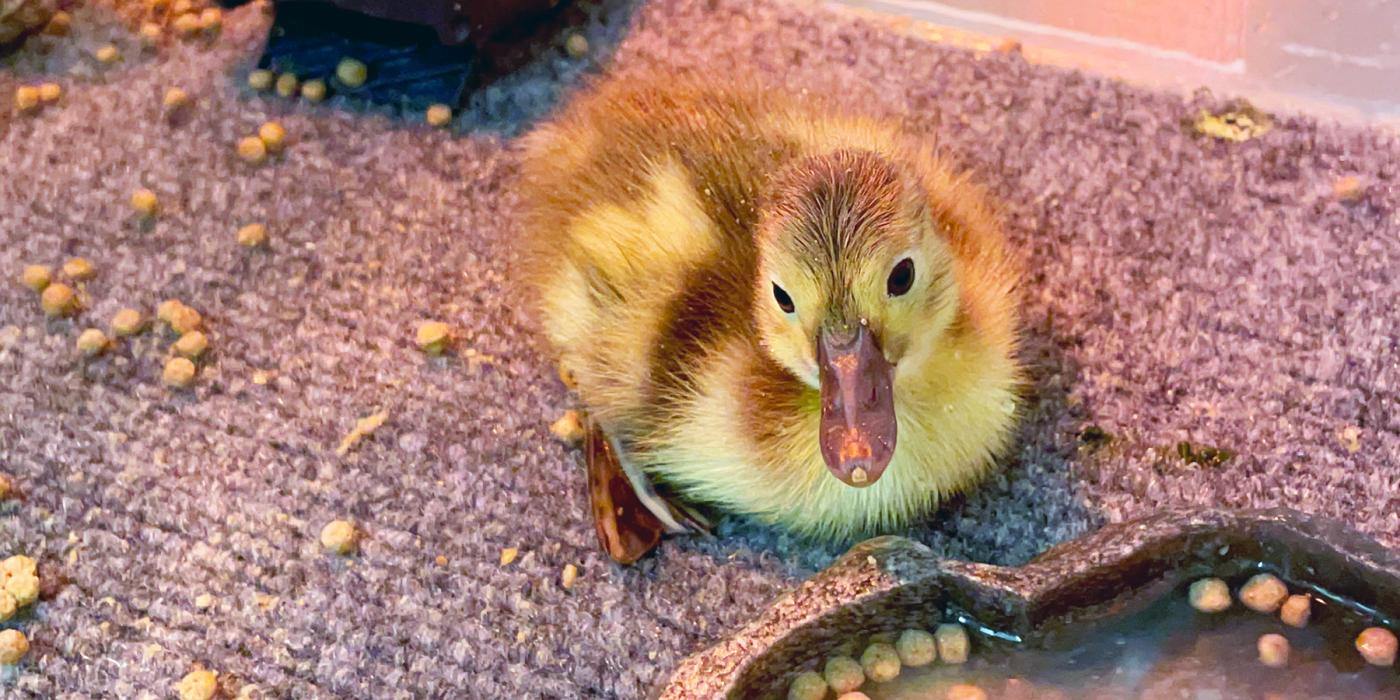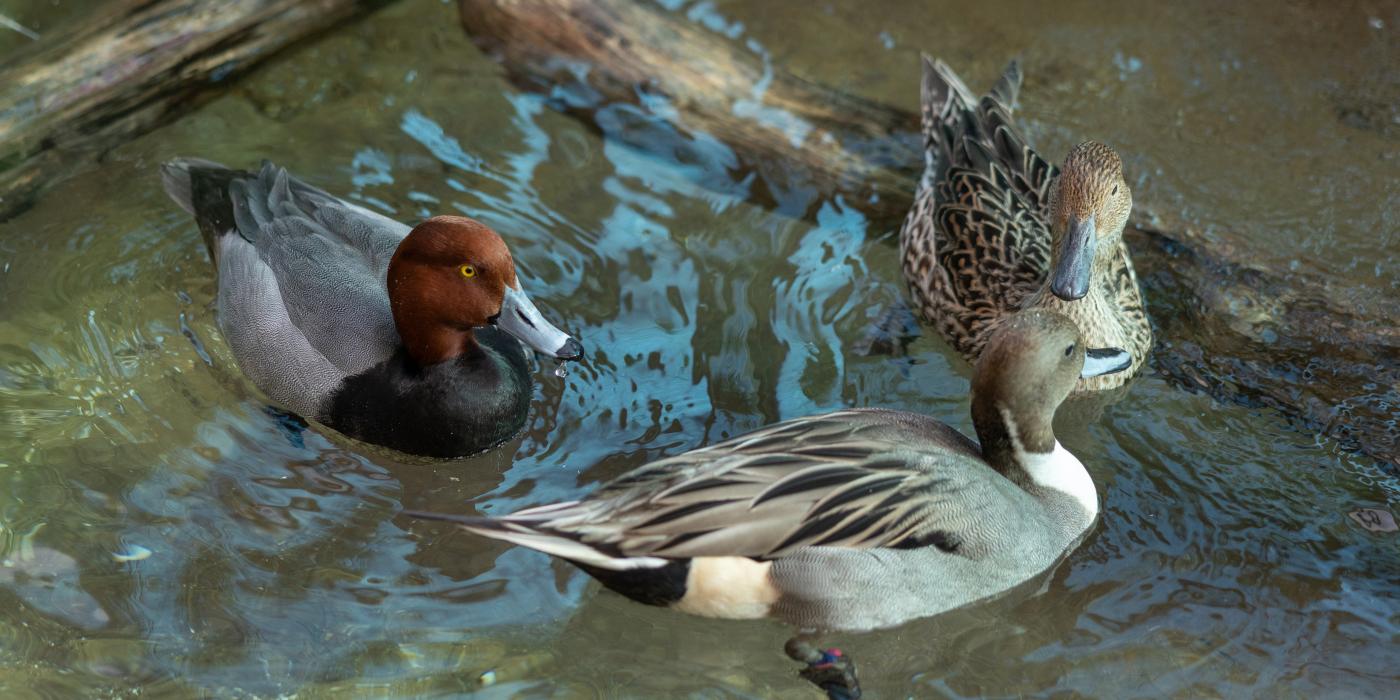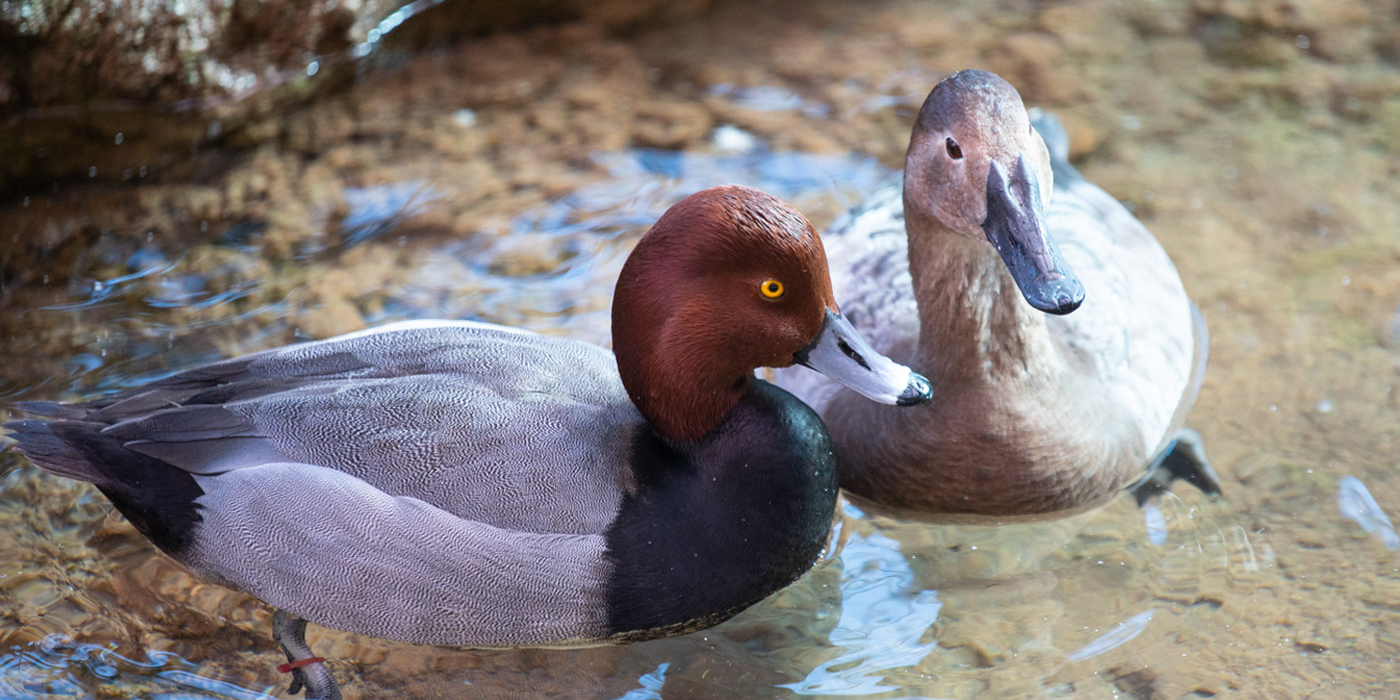Hello, Ducklings! Zoo Welcomes Six Canvasback Babies
Often called “the aristocrats of ducks” by birders, the North American canvasbacks are admired for their elegant plumage and expert diving skills. These majestic birds are a rare sight in human care —making the arrival of six fuzzy canvasback ducklings an occasion worthy of shell-ebration!
Staff welcomed the yet-to-be-named ducklings on Monday, May 19. The Smithsonian’s National Zoo is the only animal care facility accredited by the Association of Zoos and Aquariums to breed and hatch canvasback ducklings this year.
The six tiny ducklings are currently living behind the scenes at the Bird House. So far, they have spent much of their lives sleeping, nibbling on baby duck food pellets, and practicing their swimming in shallow water.
Guests at the Zoo will not be able to visit the fluffy brood, as the youngsters are too small to safely navigate their exhibit. Instead, the ducklings are being tended to in the Bird House’s nursery area by trained staff.
The canvasback ducklings float in the nursery pool at 2 days old. (Smithsonian/Sara Hallager)
A baby boom at the Bird House
The ducklings’ arrival comes as breeding and nesting season is in full swing at the Bird House. Each spring and summer, visitors can catch a glimpse of the resident birds as they display courtship behaviors, build nests, and lay eggs as part of their natural life cycles.
In April, staff observed the hatchlings’ parents, male Crowley and female Rowena, performing some alluring (to ducks) courtship behaviors. With canvasback ducks, males make a soft cooing sound, and the females respond with a soft “krrr-krrr” noise.

Crowley, one of two male canvasbacks at the Bird House exhibit. (Smithsonian/Roshan Patel)
Keepers marked the courtship ‘successful’ when they noticed Rowena constructing a nest a while later. Grasses, sedges, and other natural nesting materials are supplied in the exhibit area by staff to encourage the ducks’ breeding and nest-making behaviors. To further “set the mood,” keepers adjust the light cycles in the habitat to indicate the changing seasons, and also create quiet patches where ducks may lay eggs.

A flock of ducks at the Zoo's Bird House exhibit. (Smithsonian/Roshan Patel)
About a month after the eggs were laid, the Bird House team transported the clutch from the nest to a specialized incubator in the nursery area.
Watch a real-time video of one of the baby ducks hatching:
The Bird House team will spend the next few months tending to the ducklings and providing opportunities for the babies to practice swimming. Between splash sessions, veterinary staff will conduct multiple health checks over the next several weeks to ensure the ducklings are developing as expected. So far, the results have been positive!
Canvasback ducklings grow quickly and typically reach maturity after just a few months. Once they're fully grown, they'll move to a larger off-exhibit habitat for a while before eventually joining flocks at other accredited zoos, said Bird House curator Sara Hallager.
Canvasbacks: North America's largest “diving ducks”
Did you know? North American ducks generally fall into two main categories: dabbling ducks and diving ducks.
Canvasbacks — one of seven duck species visitors can see at the Bird House’s Prairie Pothole aviary — are North America's largest diving ducks.
- “Dabbling” ducks – Dabbling ducks ride higher on the water and forage near the surface. They tip forward to dunk their heads underwater while their tails pop up with a flourish. Dabblers favor shallow water and have legs positioned directly under their bodies, which makes it easier for them to walk on land.
- “Diving” ducks – Compared to dabblers, divers sit lower in the water and dive beneath the surface, where they feed on the aquatic vegetation and small invertebrates hiding at the bottom of ponds and lakes. Some species can dive can as deep as 40 feet (12 meters) underwater. Diving ducks prefer deeper water ponds and lakes, where they can take advantage of their back-set legs for extra swimming power.
Water plays a vital role in a duck's life cycle. Both dabbling and diving ducklings are able to swim in open water just hours after hatching—although they won’t learn to fly until they reach 60-70 days old.
How the Smithsonian supports North America’s migratory waterfowl

The Bird House exhibit at the Smithsonian's National Zoo in Washington, D.C. (Smithsonian/Skip Brown)
At the Bird House, the canvasbacks live in a habitat that recreates the “Prairie Pothole” region of North America. This area, which spans from Minnesota to northwest Canada, is filled with ponds and wetlands that make it an ideal breeding ground for many waterfowl species. Each year, hundreds of thousands of canvasbacks nest there, raise their young, and feed on aquatic plants before heading south for the winter.
By keeping breeding groups of common waterfowl like canvasbacks, Bird House staff aim to help researchers learn more about how migratory birds reproduce—knowledge that could be key to their survival.
Interested in the Smithsonian's efforts to protect migratory bird species? Check out the Smithsonian Migratory Bird Center, a long-standing research program dedicated to understanding, conserving and championing the grand phenomenon of bird migration.
Want more Zoo updates? Sign up for the National Zoo News and get updates on animal care, zoo events, and conservation delivered straight to your inbox.
Related Species:



